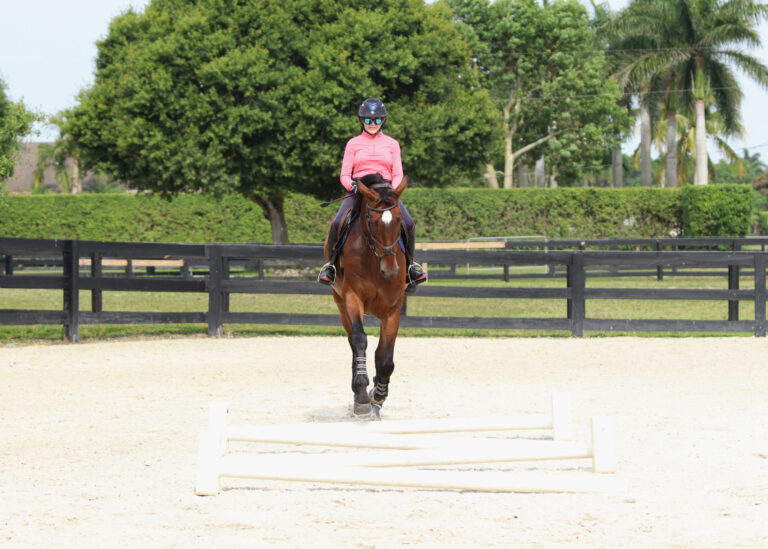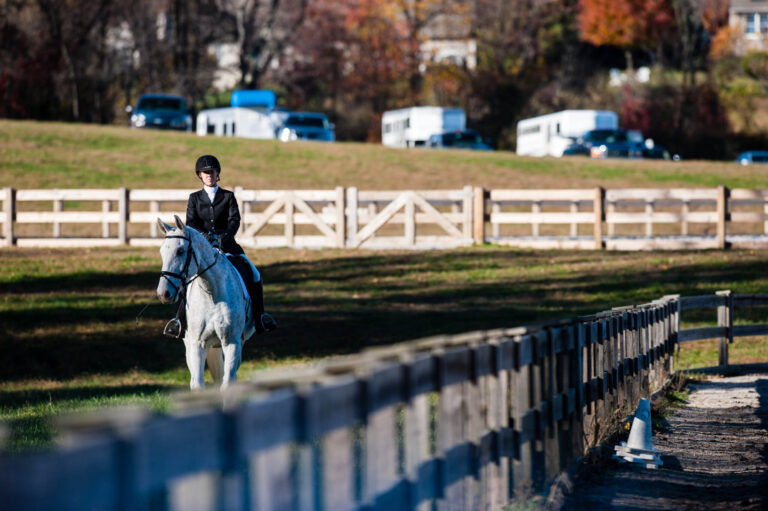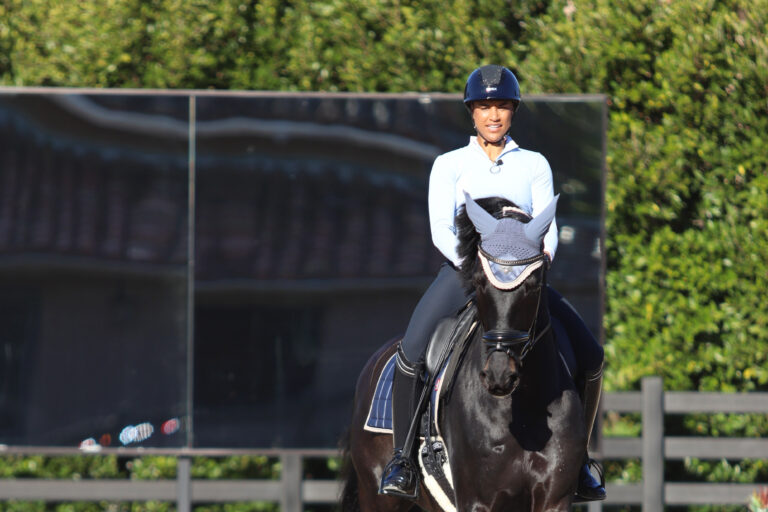Legendary trainer George Morris has often called today’s show hunters “hothouse petunias.” He and others have complained that predictable courses?outside, diagonal, outside, diagonal?over similarly decorated fences with invitingly round shapes and omnipresent ground lines are less challenging than the courses of old. To address these concerns and breathe new life into the sport, the US Hunter Jumper Association High Performance Hunter Committee has created a showcase event: The USHJA International Hunter Derby presented by Dietrich Insurance.

OK, the name is a mouthful, but what the committee wants the USHJA International Hunter Derby to become known as is pretty simple: “The Grand Prix of Hunters.” The goal is to produce brilliant jumping and riding through more challenging courses, while encouraging intense competition and ?attracting bigger crowds and sponsorship with a new format and significant prize money. The committee experimented with a few demo classes last year before launching the first official season of more than 30 shows around the country, which culminated in a national championship, the USHJA International Hunter Derby Finals.
Ron Danta, the committee chair, says, “Only four months into the series, show managers were vying to host future events, competitors were calling and writing in on a daily basis about their positive experiences and how the USHJA hit a ?grand slam’ with this program. Owners are heard to be saying that they want to purchase ?Derby’ horses for their trainers, and sponsors are lining up and committing more money than the hunter industry has ever seen.”
Not Your Usual Course
The new Derby jumps resemble ?obstacles you’d find in the hunt field, such as banks, ditches, gates, walls, hedges, coops and natural post-and-rail fences. Once considered typical challenges in the show-hunter ring, these now relatively unfamiliar obstacles are taking some horses and riders by surprise in the first rounds.
“This is not your typical hunter course,” says Chrystine Tauber, US Equestrian Federation “R” hunter judge and vice chair of the HPH committee. “When horses come in the ring, their ears and heads perk up. It’s like an enchanted forest for them. Some of them really rise to the occasion. Others need a little more practice.” The first rounds have seen refusals, dropped rails and even spook-induced rider falls, but after horses have been over the fences once, they return to the ring with more confidence in the second rounds.
With more truly vertical fences (without extra elements such as brush and flower boxes that give “verticals” in typical hunter classes more of an ascending, triple-bar shape) and minimal to no ground lines, the jumps require more exact riding than typical hunter fences. The track is more creative, too, including bending lines, unrelated distances, serpentines, inside turns and long gallops to fences. Every course also includes up to four optional 4-foot fences. So each rider is challenged to choose the best strategy to produce the most brilliance from his or her horse. “If a rider with a bold and athletic jumper chooses tougher options and is successful, that brilliance will be rewarded,” Chrystine says.
Once the horses get the hang of the new jumps, they ?really enjoy the ?Derbies, says Diane Carney, member of the HPH committee and owner of two “Derby” horses. “If they’ve been ridden in the country, nothing in these classes is unusual. They’re very inviting courses, and the horses are having a good time galloping around them.”
Another unique aspect of the competition is its two-round format. Round 1 is a classic course judged on overall impression, technique, style, consistency of pace, accuracy, bravery and skill in ?negotiating the 4-foot option fences. Round 2 is a Handy Hunter course, which looks for these qualities, as well as demonstration of handiness via at least two of the following options: walk or trot jump, gate to open while mounted, jump that riders must dismount to lead their horses over, tight turns, clever jump approaches (for instance, angling a fence or cutting through a grove of trees), and halt and/or rein back. Judges want to see riders tackle these challenges boldly, not conservatively, says Chrystine. “I think of this round like a jumpoff. Show us your stuff! Take a more daring line, use more pace. Pull out all the stops!”
“We’re putting riding back into the hunters,” says Diane. “To place your horse at these jumps with the proper impulsion, at the proper distance, and produce the best possible shape in the air, you need a connection and the ability to balance your horse between your leg, seat and hand. There’s more to it than counting strides.”
There are no restrictions for entries: The series is open to professionals, amateurs and juniors alike from any discipline. “A good horse is a good horse,” says Diane. “It’d be a shame to say that equitation horses, for example, aren’t good enough jumpers to do this.” Pro hunter riders are heavy favorites in these classes, but Grand Prix jumper riders, juniors and equitation riders have already scored placings, as well.
Compared to standard hunter and Handy Hunter classes in which horses might be marked down for minor faults, such as a lead swap on takeoff or a playful head shake after a great jumping effort, both rounds in the Derby encourage horses to show a little life. “This is not a rub class,” says Diane. Straightness, way of going and jumping style are ?important, but the preference is more for athletic, daring performances than the robotic, expressionless trips so often seen in the hunter ring. Tammy Provost proved this at the first official Hunter Derby class, held at the Lake St. Louis Holiday Horse Show, in Whiteside, Missouri, on First-Year Green hunter Daquiri. The 6-year-old won the class with a forward, athletic second round, despite a few strides of cross-canter.
Four judges, working in teams of two, evaluate each class. In Round 1, each pair scores the trip on a scale of 1 to 100, with the emphasis on brilliance?for example, galloping to a fence or successfully navigating a harder option. In Round 2, each pair of judges may add up to 10 bonus points for exceptional handiness?for example, efficiently negotiating a trot fence or opting to take an inside turn. “These bonus points have created a much greater incentive to actually make tighter turns and take daring lines,” says Chrystine.
Staying on Track
To continue advancing the sport with this new series, the HPH committee has taken an educational role, encouraging show managers to
- offer rider meetings to explain unique aspects of the classes, such as the option fences, the jog-up for soundness (done before the class, rather than afterward as in other hunter classes, so an awards ceremony can be held immediately following the final ride) and other rules, including one that allows riders to jump a decorative element, such as a stone wall, to take the shortest, most direct route to the next fence.
- provide a handout for judges, ?reminding them to reward brilliant performances, particularly when riders successfully navigate more ?challenging options.
- hire knowledgeable commentators to both educate the spectators??pointing out differences in riders’ strategies and horses’ performances?and build suspense during the competition. Pros like Frank Madden and Geoff Teal have been recruited to offer knowledgeable commentary at some shows.
- schedule the classes in locations and times that will attract the most spectators?and thus the most ?sponsors.
Raising the Bar
As Derby competitions heat up, Chrystine expects the course difficulty to increase as well. She compares it to the USEF Show-Jumping Talent Search Finals, which began as the US Equestrian Team Medal Finals in the 1980s: “Riders weren’t well prepared for the gymnastic phase in the first year. But they went home and practiced, and each year the ?designers could ask a little more of them ?because they came back better prepared each time.” In the first Derby season, she says, “Everyone’s learning that horses react differently to differently constructed jumps, and they’re learning how to handle that. It’s making for better riders.”
Over the next few years, the bar will be raised literally, too. Current jump heights average between about 3-foot-6 and 3-foot-9. “A lot of amateurs and juniors are already finding that they can jump the higher option fences,” Chrystine says. “I expect heights to eventually average four foot to four-foot-three.”
By requiring formal dress (shad?belly, buff or canary breeches and white shirt) and offering best-groomed awards, the HPH committee even hopes to revive the polished appearance for which American ??riders were once so well-known. “We’re ?seeing beautiful turnouts: meticulous tack and braids and the return of checkerboard rump patterns,” Diane says. “This is ?going to have a great trickledown effect on the sport as a whole.”
This article originally appeared in the June 2008 issue of Practical Horseman magazine. Read about the 2011 USHJA International Hunter Derby Finals in the November 2011 issue.











